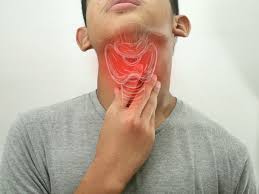
Getting to Know the Symptoms and Causes of Mumps
Getting to Know the Symptoms and Causes of Mumps – Mumps is an infectious disease caused by a viral infection, especially from the paramyxovirus group. Usually, this infection attacks the parotid glands, which function to produce saliva, and causes swelling. Common symptoms that appear in mumps sufferers are swollen cheeks and jaws.
Getting to Know the Symptoms and Causes of Mumps
roskapital – The parotid glands are located under the ears, and when inflamed due to a viral infection, this condition has caused swelling. This virus is easily spread through saliva droplets produced when the sufferer coughs, sneezes, or talks. Early treatment is very important, considering that mumps can cause serious complications, such as the spread of infection to the brain or hearing loss. Therefore, knowing the steps for prevention and treatment is very important to reduce the risk of mumps.
Causes of Mumps
Mumps infection is caused by a virus from the paramyxovirus group, which can enter the human body, multiply, and cause inflammation and swelling of the parotid glands. The spread of this virus can occur easily in several ways:
1. Inhaling mucus droplets from sufferers when coughing, sneezing, or talking.
2. Having direct contact with sufferers, such as kissing.
3. Touching objects around the sufferer and then touching the nose or mouth without washing hands.
4. Sharing eating and drinking utensils with sufferers.
There are several factors that can increase the risk of contracting mumps, including:
– Not having received the MMR (measles, mumps, rubella) vaccine.
– Being between 2 and 12 years old.
– Having a weak immune system, for example due to HIV/AIDS, long-term use of corticosteroid drugs, or undergoing chemotherapy.
– Living or visiting areas with many cases of mumps.
Symptoms of mumps generally begin to appear 12 to 25 days after being infected with the virus. The hallmark of mumps is swelling of the parotid glands and other symptoms of infection. Some symptoms that can appear include:
– Swelling of the cheeks, which can occur on one or both sides.
– Pain when chewing or swallowing food.
– Fever up to 39°C.
– Dry mouth.
– Headache.
– Joint pain.
– Abdominal pain.
– Easily tired.
– Loss of appetite.
However, in some people, mumps symptoms can be milder or resemble cold symptoms, and some do not experience any symptoms at all.
Read Also : Understanding the Herpes Virus
See a Doctor Immediately
It is important to consult a doctor immediately if you or your child experience more serious symptoms, such as:
– Severe headache.
– Decreased consciousness or fainting.
– Seizures.
Mumps Examination
When examining a patient, the doctor will evaluate the swollen cheek or neck area, as well as examine the condition of the throat and tonsils. To confirm the diagnosis, the doctor may perform several additional examinations, such as:
1. Buccal swab test to detect the type of microorganism that causes mumps.
2. Blood test to detect viral infections in the blood.
3. Urine test to confirm and detect the possibility of spreading infection to the urinary tract.
Mumps Treatment
If the patient’s immune system is good, mumps can usually heal on its own within 1-2 weeks. Some steps that can be taken to relieve symptoms and discomfort when experiencing mumps include:
Read Also : Seni Berbicara yang Efektif dan Meyakinkan
– Get enough sleep and rest.
– Increase your intake of water.
– Compress the swollen area with warm or cold water to reduce pain.
To reduce the need to chew, it is advisable to eat soft foods. You can also use fever and pain relievers, such as ibuprofen and paracetamol.
Mumps Prevention
Mumps can be prevented through MMR (measles, mumps, rubella) immunization given to children. The MMR vaccine functions to protect the body from measles, mumps, and rubella.
This vaccine should be given in two doses: the first when the child is 18 months old and the second at the age of 5 to 7 years. If the first immunization cannot be done at the age of 18 months, the first dose can still be given until the child is 3 years old.
For those who have not received the MMR vaccination during childhood, this vaccine can still be given in adulthood. MMR vaccination for adults is recommended especially for those who are in a high-risk group for exposure to the virus that causes mumps.
In addition to immunization, there are several steps to prevent mumps that can be taken, including:
– Routinely wash your hands with soap and running water.
– Avoid sharing bathing or eating utensils with someone who has mumps.
– Implement cough etiquette, such as covering your mouth and nose with a tissue when coughing or sneezing.
